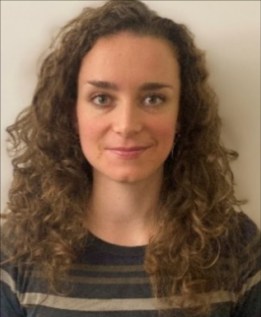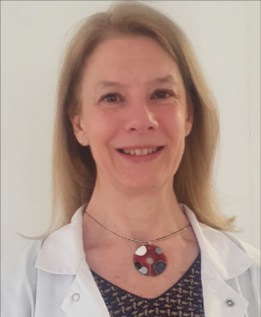A new thought experiment suggests that the mere presence of a black hole can destroy a nearby quantum spatial superposition. Developed by physicists in the US, the experiment implies that the long-range gravitational field of the particle in the superposition will interact with the black hole’s event horizon, causing cause the quantum superposition to decohere within finite time.
Coherence is a concept in quantum mechanics that allows a system to exist in a superposition of several different quantum states at the same time. Decoherence is the process of destroying a superposition by making a measurement that puts the system into a specific state. Measurement in this case is a general term and refers to an interaction between a quantum system and its surroundings. A measurement could, for example, be a stray magnetic field or a fluctuation in temperature as well as a lab-based determination of a property of the system (such as the polarization of a photon).
Superposition and other aspects of quantum mechanics do a fantastic job of describing the behaviour of microscopic systems. However, physicists have not been able to incorporate gravity into quantum theory’s description of nature. Today, gravity is best described by Albert Einstein’s general theory of relativity and unifying the two theories in a theory of quantum gravity is an important aim of modern physics. However, this has proven very difficult because the effects of quantum gravity are only expected to be relevant at very short length scales corresponding to extremely high energies – which are well beyond the capabilities of current and future particle accelerators.
Quantum thinking
Because real experiments cannot be done, physicists use thought experiments to try to develop a consistent theory of quantum gravity. These seek to understand the behaviour of quantum systems under extreme gravitational conditions such as those that exist at the event horizon of a black hole. This is a boundary surrounding a black hole, beyond which nothing – not even light – can escape the black hole’s immense gravitational field. This implies that information can enter a black hole, but it cannot leave.
This latest thought experiment has been devised by physicists at the University of Chicago and Princeton University and is described in a preprint on the arXiv server. Co-author Daine Danielson says that the experiment considers a hidden observer behind a black hole’s event horizon.
The thought experiment involves a massive particle, such as an electron, that is fired at barrier that contains two slits. According to quantum mechanics, the electron will behave as a wave that diffracts through both slits simultaneously. In other words, the electron is in a coherent spatial superposition of two states, each travelling through its own slit. If the electrons strike a screen behind the slits, the two states are recombined and create an interference pattern.
Alice and Bob
The new thought experiment describes a double-slit experiment that is conducted near to a black hole by a physicist called Alice. There is also an observer called Bob who is inside the black hole.
As Alice conducts her double slit experiment, a quantum theory of gravity requires that the massive particle interacts with the black hole via “soft gravitons”. Gravitons are hypothetical carriers of the gravitational field and are analogous to photons – which are carriers of the electromagnetic field.
These soft gravitons can be absorbed by the black hole, where they can be measured by Bob – at least in principle. By making multiple measurements of soft gravitons over time, Bob should be able to deduce the state of the quantum superposition in Alice’s experiment. In other words, Bob is making a measurement on Alice’s experiment from beyond the black hole’s event horizon, from where he is causing the spatial superposition to decohere.
Causal paradox
Therein lies the paradox. How can Bob decohere Alice’s experiment if information cannot travel out of the event horizon? Indeed, doing so violates causality. Danielson and colleagues argue that this paradox can only be resolved if the black hole itself decoheres Alice’s experiment before Bob can.
In other words, they say, the black hole affects the quantum superposition in the same way as a classical observer. “Here, we have a precise situation where the geometry of the universe itself is giving a ‘definiteness’ to a quantum superposition,” Danielson says.
In their paper, the researchers argue that their analysis also applies to other types of horizons, such as the cosmological horizon – which defines the size of the observable universe. Such thought experiments are useful for probing the fundamental rules that a consistent theory of quantum gravity may one day have, the researchers say. “Any theory of quantum gravity, for example, must have the fundamental feature that black holes which act as quantum systems act as observers,” says co-author Gautam Satishchandran.
Vlatko Vedral, a quantum physicist at the University of Oxford, says that he has reservations about some of the treatments in the paper. He says that the superposition is treated quantum mechanically, but the authors treat the background gravitational field – such as the black hole itself – classically. “It’s not clear that an approximation like this is valid in the context they consider,” he says. However, if the conclusions are correct, Vedral considers them to be profound. The thought experiment suggests that black holes can serve as a source of irreversibility – the destruction of a quantum state that can never be fully recovered. Since gravitation is infinitely long-range, it does not matter how far an experiment is from a black hole, he says, the decoherence effect that the authors calculate would be non-zero. Therefore, the creation and recombination of quantum spatial superpositions can never be fully efficient because “part of [the system] is always irreversibly lost to beyond the horizon,” he says.

 From Laura Bassi to Marie Curie, for centuries, women have been making important contributions to the world of physics. Now with ViewRay’s MRIdian system, women are leading the charge in bringing the latest advancement of MRI-guided radiation therapy to the forefront of radiation oncology and expanding the medical physics landscape.
From Laura Bassi to Marie Curie, for centuries, women have been making important contributions to the world of physics. Now with ViewRay’s MRIdian system, women are leading the charge in bringing the latest advancement of MRI-guided radiation therapy to the forefront of radiation oncology and expanding the medical physics landscape.
